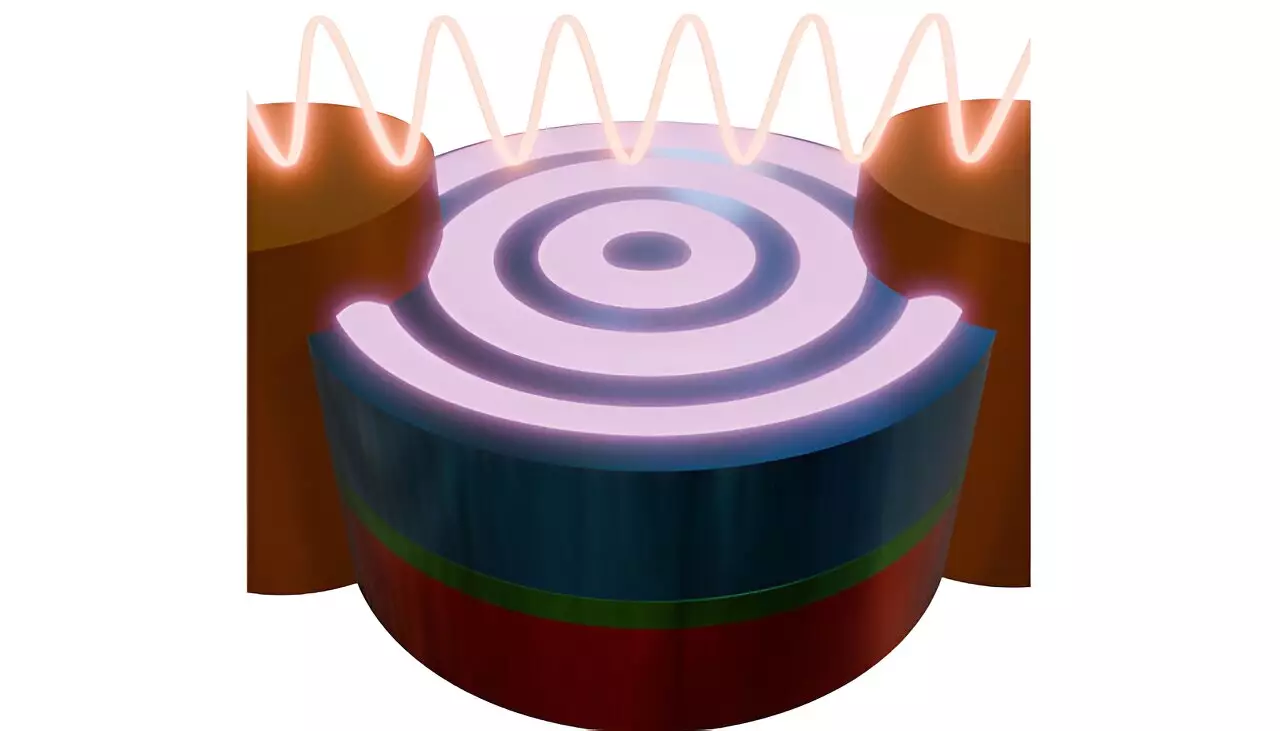As we continually push the boundaries of technology, the quest for smaller, faster, and more energy-efficient computing devices has never been more pressing. A groundbreaking study from a collaboration between the University of Vienna, the Max Planck Institute for Intelligent Systems in Stuttgart, and the Helmholtz Centers in Berlin and Dresden heralds a significant advancement in this endeavor. By exploring the realm of magnonic circuits—utilizing spin waves produced in magnetic materials—the research advocates a promising route toward sustainable and efficient computing architectures.
The standard computing devices we depend on rely heavily on billions of transistors functioning through complementary metal oxide semiconductor (CMOS) technology. As the demand for compact devices rises, researchers grapple with various physical constraints that threaten not only the performance but also the viability of these systems. One major concern is the substantial energy demand resulting in heightened consumption and thermal losses, compelling scientists to seek alternative routes. The nascent field of magnonics offers a refreshing perspective, advocating for the employment of magnons—the quantum mechanical excitations corresponding to spin waves.
To better comprehend the notion of spin waves, one could visualize a serene lake: dropping a stone creates ripples that radiate outward from the point of impact. This illustration parallels what happens in a magnetic material where the “stone” is replaced by a specialized antenna, enabling the generation of spin waves. As Sabri Koraltan from the University of Vienna articulates, these waves can facilitate the transfer of information and energy with minimal losses, promising a new horizon in computing effectiveness.
The Innovation Behind Spin Wave Generation
The conventional methods of generating spin waves, particularly through nano antennas, pose significant limitations regarding efficiency and production feasibility. These complex structures often require intricate fabrication within specialized cleanroom facilities and state-of-the-art lithography techniques. Responding to these challenges, researchers have opened up new avenues by directing electric currents through magnetic stacks that exhibit swirling vortex patterns—a noteworthy breakthrough. This method not only simplifies the generation of spin waves but also promises a level of efficiency that dramatically surpasses established techniques.
Using state-of-the-art facilities such as the “Maxymus” X-ray microscope at the BESSY II electron synchrotron in Berlin, the researchers were able to visualize the predicted spin waves at nanoscale wavelengths and Gigahertz frequencies. This capability of observing spin waves in action represents a pivotal turning point, providing essential insights into the wave dynamics underlying magnonic devices. The development of innovative micromagnetic simulation software—referred to as magnum.np—further enables large-scale simulations, providing crucial understanding of the mechanisms that govern efficient excitation of spin waves.
Another compelling aspect of this research is the introduction of special materials capable of changing their magnetic orientation in response to applied strain. This innovation allows researchers to dynamically adjust the direction of spin waves merely by altering the magnitude of the current, paving the way for active magnonic devices that can adapt to varying computational demands. The ability to reroute spin waves opens up a plethora of possibilities for creating reprogrammable magnonic circuits, heralding a future of adaptable computing systems that could be significantly more energy-efficient compared to traditional silicon-based architectures.
The collaborative research findings mark a pivotal moment in the exploration of alternative computing paradigms. By harnessing the principles of magnonic technologies and spin waves, it suggests a move towards next-generation systems that not only address the limitations faced by current technologies but also promise improved performance and drastically reduced energy consumption. As we stand on the verge of a potentially transformative era in computing, the exploration of magnons may just be the catalyst needed to propel us into a more sustainable technological future.


Leave a Reply